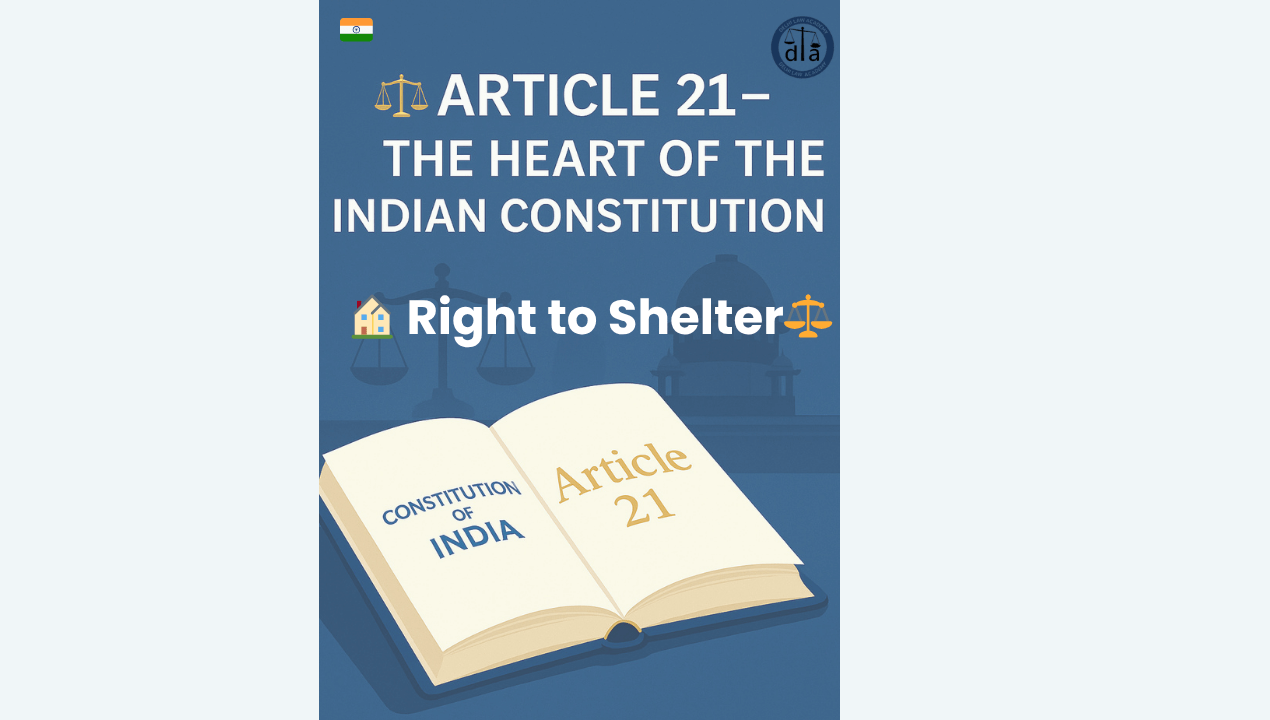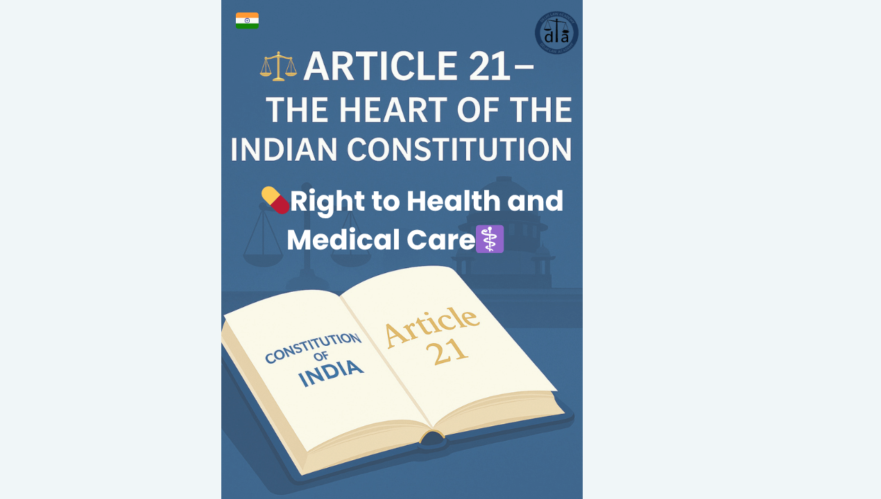
🏠 Right to Shelter | Article 21 of the Indian Constitution
The Right to Shelter is a vital component of the Right to Life guaranteed under Article 21 of the Indian Constitution.
The Supreme Court has consistently held that the right to life includes the right to live with dignity, which cannot be achieved without adequate housing and shelter.
📜 Constitutional Basis
Although the Constitution does not explicitly mention the right to shelter, the judiciary has interpreted it as a part of the right to life and personal liberty under Article 21.
A roof over one’s head is essential to live a dignified human life, ensuring safety, privacy, and stability.
“The right to life would take within its sweep the right to food, clothing, decent environment, and reasonable accommodation.”
— Chameli Singh v. State of Uttar Pradesh (1996)
⚖️ Landmark Judgments on Right to Shelter
- 🏠 Shantistar Builders v. Narayan Khimalal Totame (1990) – The Supreme Court held that the right to life includes the right to have a roof over one’s head and a reasonable accommodation.
- 👩⚖️ Olga Tellis v. Bombay Municipal Corporation (1985) – The Court ruled that pavement dwellers cannot be arbitrarily evicted without proper rehabilitation as it affects their right to livelihood and shelter.
- 🏘️ Chameli Singh v. State of Uttar Pradesh (1996) – Recognized the right to shelter as a part of the right to live with dignity under Article 21.
- 🌿 Sudama Singh v. Government of Delhi (2010) – Directed the State to provide rehabilitation and alternate housing to evicted slum dwellers.
These cases collectively established that the right to shelter is essential for human dignity and survival.
🏛️ Scope of the Right to Shelter
The Right to Shelter encompasses more than mere physical housing. It includes:
- 🏡 Adequate Living Space: Housing that ensures safety, privacy, and comfort.
- 💧 Access to Basic Amenities: Clean water, sanitation, electricity, and healthcare facilities.
- 📍 Security of Tenure: Protection from forced evictions without due process and rehabilitation.
- 🌏 Livable Environment: Surroundings that support health, education, and livelihood.
The Court has interpreted “shelter” broadly to include all the conditions necessary for a dignified existence.
📘 Role of the State and Welfare Policies
The State has an obligation under Article 21 and Directive Principles to ensure housing for all citizens, especially marginalized sections.
The government must adopt welfare schemes, slum rehabilitation programs, and low-income housing projects to realize this constitutional promise.
- 🏗️ Promotion of affordable housing schemes for the poor.
- 🏙️ Rehabilitation for displaced and evicted families.
- ⚖️ Legal safeguards against forced evictions without notice or compensation.
These measures give practical meaning to the constitutional vision of dignity and equality for all.
📖 Directive Principles and Right to Shelter
The Right to Shelter is supported by several Directive Principles of State Policy (DPSPs):
- 📜 Article 39(a) – Adequate means of livelihood for all citizens.
- 👨👩👧👦 Article 41 – Right to work and public assistance in certain cases.
- 🏡 Article 47 – Improvement of living standards and public health.
Though not enforceable by courts, these provisions guide the State’s duty to ensure every individual has access to adequate housing.
🌐 Conclusion
The Right to Shelter is a cornerstone of human dignity and social justice.
By interpreting it under Article 21, the Supreme Court has ensured that no citizen is denied a basic human necessity — a safe home.
True liberty cannot exist without security, and true security begins with shelter.
📘 Free Study Material for Law Students!
Download our FREE study material prepared by Delhi Law Academy’s expert faculty.
💬 Frequently Asked Questions on Right to Shelter
It ensures every person has access to adequate housing, safety, and dignity as essential components of a decent life.
The ruling was reinforced in Chameli Singh v. State of Uttar Pradesh (1996).
Shelter also implies living conditions that ensure dignity and well-being.
Contact us
📍 Delhi Law Academy – Jaipur Branch
6C, Tower 2, Coaching Hub, Pratap Nagar, Jaipur – 302033
📞 Phone:
+91 9911916552
+91 8447285606
✉️ Email:
contactus@delhilawacademy.com

